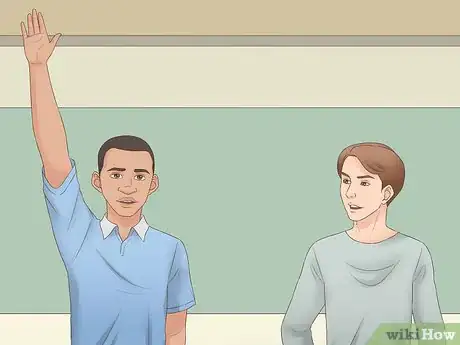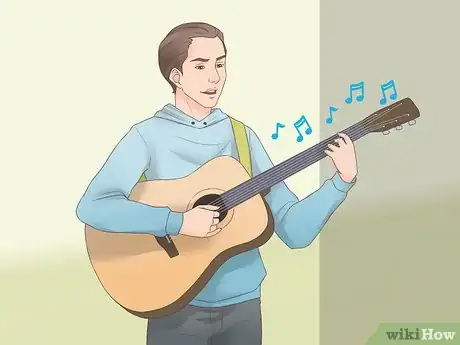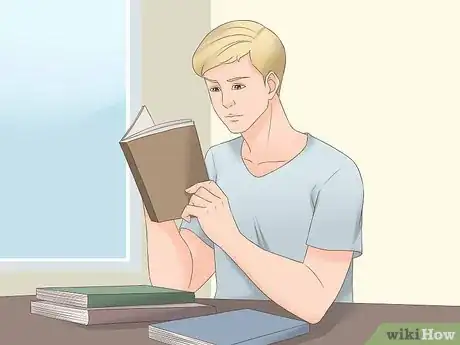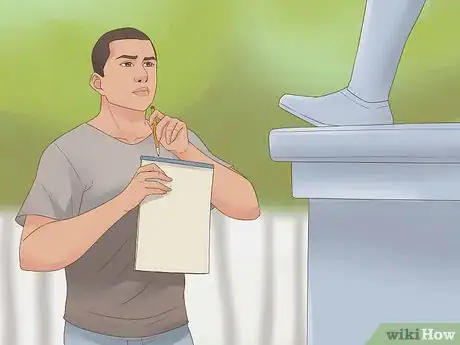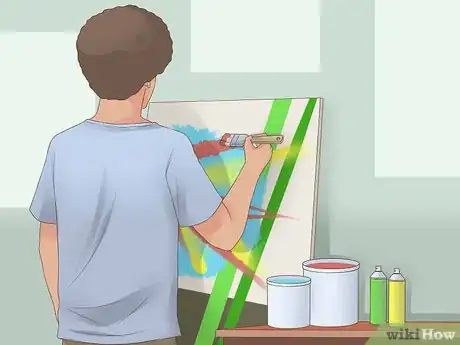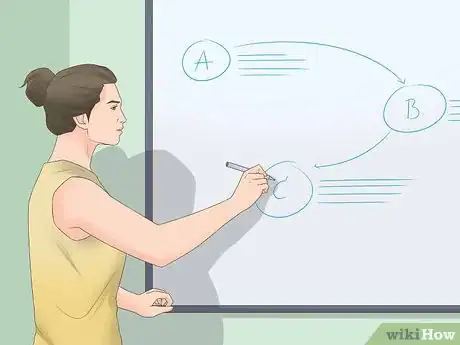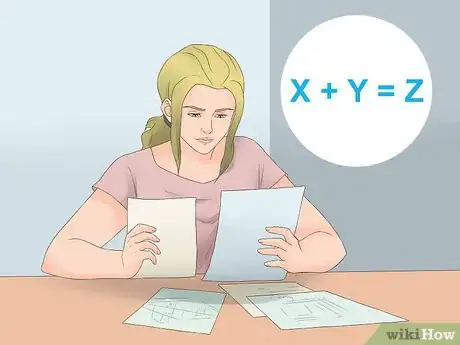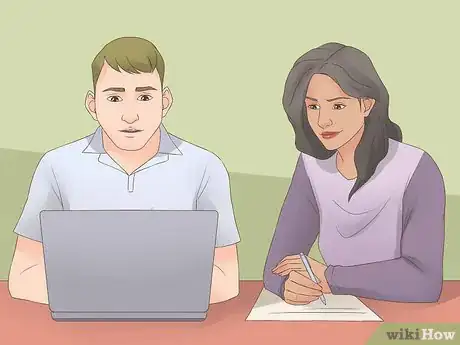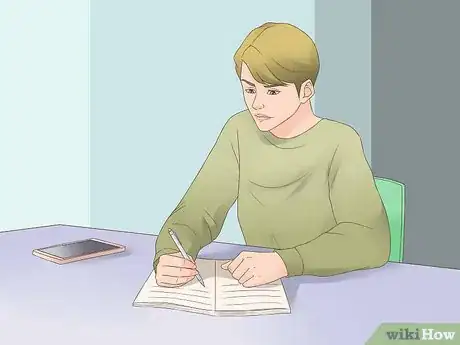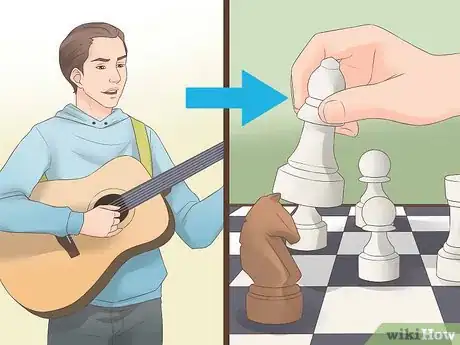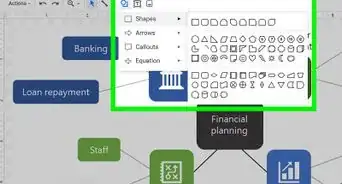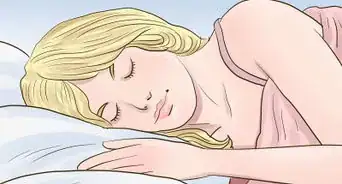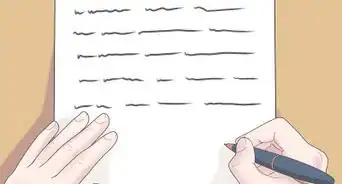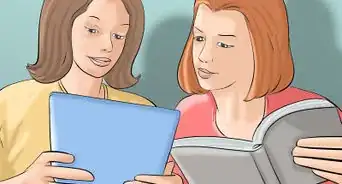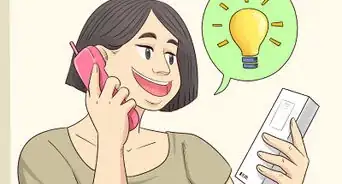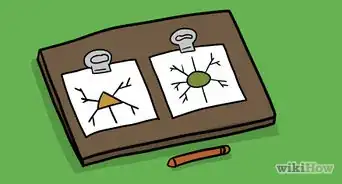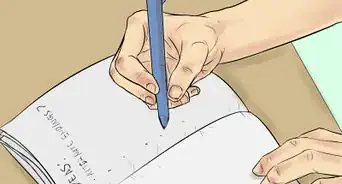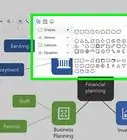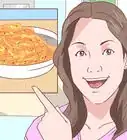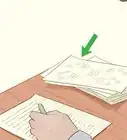This article was co-authored by Dan Klein. Dan Klein is an improvisation expert and coach who teaches at the Stanford University Department of Theater and Performance Studies as well as at Stanford's Graduate School of Business. Dan has been teaching improvisation, creativity, and storytelling to students and organizations around the world for over 20 years. Dan received his BA from Stanford University in 1991.
There are 9 references cited in this article, which can be found at the bottom of the page.
wikiHow marks an article as reader-approved once it receives enough positive feedback. This article received 15 testimonials and 98% of readers who voted found it helpful, earning it our reader-approved status.
This article has been viewed 115,423 times.
It is difficult—if not impossible—to measure creativity, and everyone is creative in their own way. However, there are steps you can take to express your creativity more frequently and more effectively. You will need to commit to making creativity a practice.
Steps
Becoming More Creative in Life
-
1Allow yourself to be different, even if it isn't immediately accepted. Be different from what is considered "normal". Do not be afraid to ask questions and share your thoughts. You may never know if your ideas are seen as creative by others – thinking creatively is about being outside the box. Let go of any notions that your ideas will be graded, or considered "right" or "wrong". Speak your mind, especially if you think that it’s something you would like to share with others.
-
2Take some time every day to be creative. Creativity is not simply innate; it is something that you learn and train every day. No novelist, painter, filmmaker, or musician ever made a career by simply sitting down and letting the ideas flow. They worked at them, learning their craft and coming up with creative ideas every day. Creative ideas only come during creative work – so get working![1]
- At first, set aside 20 minutes each day to work on your craft. You can build up to a larger time commitment as you hone your skills.
- Even if you don't want to work in a creative field, practicing a creative art (painting, music, etc.) every day can help increase your creativity in everyday life.
Advertisement -
3Be curious. Look up anything you don't know. Read books or learn skills that have always interested you. Strike up conversations with people whose stories you want to know. The more material you store in your head, the better creative connections you can make in your life.[2]
-
4Get enough rest, food, and water. If you're tired, there's little point in trying to squeeze out something creative from your head; radical ideas may be less likely to pop into your head when you're drained. Take a nap or a tea break to recharge. You can think better when your mind is fresh, and you should be able to come up with creative ideas more easily.[3]
- Your brain cells need the right amount of glucose to work well. Typically, the ideal amount is about 25 grams. Too little can result in confused thinking, while too much can damage your brain cells. Try snacking on a banana, which has about the right of glucose in it, or eat high fiber carbohydrates (e.g., broccoli or whole-wheat bread) that supply glucose more steadily.[4]
- If you're dehydrated, there will be fewer connections in your brain. This sometimes gives you a feeling of "brain-deadness".
-
5Absorb a diverse array of influence, including those not related to your field. When you are deeply involved with myriad things, you enable yourself to become truly creative. Creativity is about bridging unexpected gaps – for example, taking influences from science and architecture into art.
- The Beatles are partially famous because of their ability to bring eastern influences and instruments, like the sitar, into western rock and roll. T famed novelist, David Foster Wallace wrote his masterwork Infinite Jest after years of studying tennis, drug addiction, math, and the science of light and optics.
- Travel is a great way to absorb new influences. Go somewhere new and explore your mind for inspiration. If you can't afford to go far, go for a walk and jot down what you see and hear. Alternatively, draw inspiration from a book.
-
6Relax. You will not have creative ideas every minute of every day, ever – but that is okay. When you try to force creativity, you can effectively block it. Don't kick yourself for bad ideas, since they are a natural part of the creative process. Just keep trying to be creative each day, and the good ideas will eventually come.[5]
Increasing Creativity on Specific Projects
-
1Experiment freely. Being creative is about taking leaps of imagination, trying new things, and seeing what happens. Try out a crazy new idea or technique, change up your normal workflow, and cut and paste your work in new and exciting ways. Many of these experiments will fail, but creativity is about finding the one unheard-of new thing that succeeds.
-
2Don't judge ideas while brainstorming. Not every creative idea is going to be a good one, and that's okay! If you are afraid of failing, or having a bad idea, you'll never come around to a better one. Stop judging your ideas as you go; instead, write down as many as you possibly can. After you're done, you will pick through the ideas to find the good ones. An idea you might think is bad might actually be fantastic when paired with an idea that strikes you later on – but you'll never know it if you erase the idea right off the bat.
-
3Mix and match old ideas. “An idea is nothing more nor less than a new combination of old elements.” Take from anything you can. Mutate it, clone it, and combine it until you have something creative that you can call your own. You don't need to think of it as stealing; this is how art begins:[6]
- The Rolling Stones mixed delta blues with English rock and roll for a new, honky-tonk style.
- William Faulkner, Nobel Prize-winning author, took James Joyce's flowing, heady style and combined it with the spiritual and racial history of his home in the American South.
- Cubism, the art form of Picasso, developed from experiments with Impressionism and the stylized masks of African and Asian sculpture.
-
4Change your environment when you feel confined or stressed. Stress can be a hindrance to your ability to express your creativity. If you feel confined, stressed, or pressured, move to another location which may be more relaxing, such as a garden or a balcony. Try listening to music to stimulate your brain cells to make connections. Putting on some music, heading outside, or switching desks can break up the monotony and get you working again.[7]
-
5Work with others on projects. Sometimes, simply asking for input can give you the "Eureka!" moment you are looking for. Everyone's mind is different, and the influences that inspire another person may be completely different from the intricacies of your own mental milieu. Someone may make a comment that is obvious given their background, but that you could never have thought of. Getting others involved will lead more influences and ideas to collide, which can spur greater creativity.[8]
- This does not mean you can't work alone. Develop a project in solitude, then send a draft to a few trusted friends and ask for critiques.
-
6Try freewriting or drawing. This means that once the pen goes on the page, you don't take it off. Make yourself work without stopping or judging for a timed five-minute burst. This is a great warm-up to creativity: it takes your mind off of judgment, and it can lead to unexpected new ideas as your brain races to keep filling the page. It also gets your brain working creatively every single day.[9]
-
7Take time to work on other projects. This may seem counter-intuitive, but taking some time away from your current creative project gives you space to think. When you return, you'll be coming at it with a fresh pair of eyes. You may be able to better see areas of improvement or to make a connection that you couldn't envision before.
Expert Q&A
-
QuestionWhat hobby helps you be creative?
 Dan KleinDan Klein is an improvisation expert and coach who teaches at the Stanford University Department of Theater and Performance Studies as well as at Stanford's Graduate School of Business. Dan has been teaching improvisation, creativity, and storytelling to students and organizations around the world for over 20 years. Dan received his BA from Stanford University in 1991.
Dan KleinDan Klein is an improvisation expert and coach who teaches at the Stanford University Department of Theater and Performance Studies as well as at Stanford's Graduate School of Business. Dan has been teaching improvisation, creativity, and storytelling to students and organizations around the world for over 20 years. Dan received his BA from Stanford University in 1991.
Improvisation Coach Try an improv class to boost your creativity. These classes are great ways to flex your imagination in a fun setting with interesting people! You can often find cheap or free classes through a local library, community center, or acting studio.
Try an improv class to boost your creativity. These classes are great ways to flex your imagination in a fun setting with interesting people! You can often find cheap or free classes through a local library, community center, or acting studio.
Warnings
- Some people find music very distracting. Try to not blast the volume, as it may also damage your hearing.⧼thumbs_response⧽
References
- ↑ http://www.bbc.com/future/story/20140314-learn-to-be-creative
- ↑ https://www.nytimes.com/guides/year-of-living-better/how-to-be-creative
- ↑ https://greatergood.berkeley.edu/article/item/how_resting_more_can_boost_your_productivity
- ↑ https://www.health.harvard.edu/healthbeat/foods-linked-to-better-brainpower
- ↑ https://beingwell.yale.edu/sites/default/files/files/2016%20July%20Momentum%20Yale.pdf
- ↑ https://www.entrepreneur.com/leadership/5-science-backed-ways-to-boost-your-creativity/311870
- ↑ https://www.takingcharge.csh.umn.edu/explore-healing-practices/healing-environment/what-impact-does-environment-have-us
- ↑ https://www.forbes.com/sites/tendayiviki/2016/12/06/why-diverse-teams-are-more-creative/
- ↑ https://www.grammarly.com/blog/free-writing/
About This Article
The easiest way to increase your creativity is to set aside some time every day to work on something creative, like painting or writing. Additionally, take influences from other subjects and cultures, like how the Beatles were influenced by eastern instruments when they recorded their White Album. You can also try taking old ideas and making them your own. For instance, novelist William Faulkner combined James Joyce’s flowing, heady style with stories from his own community to create his own style of Southern Gothic. For more advice, including how to break out of a creative slump, keep reading.
